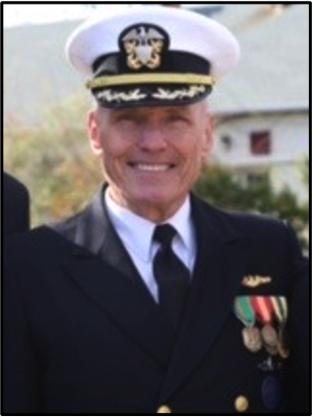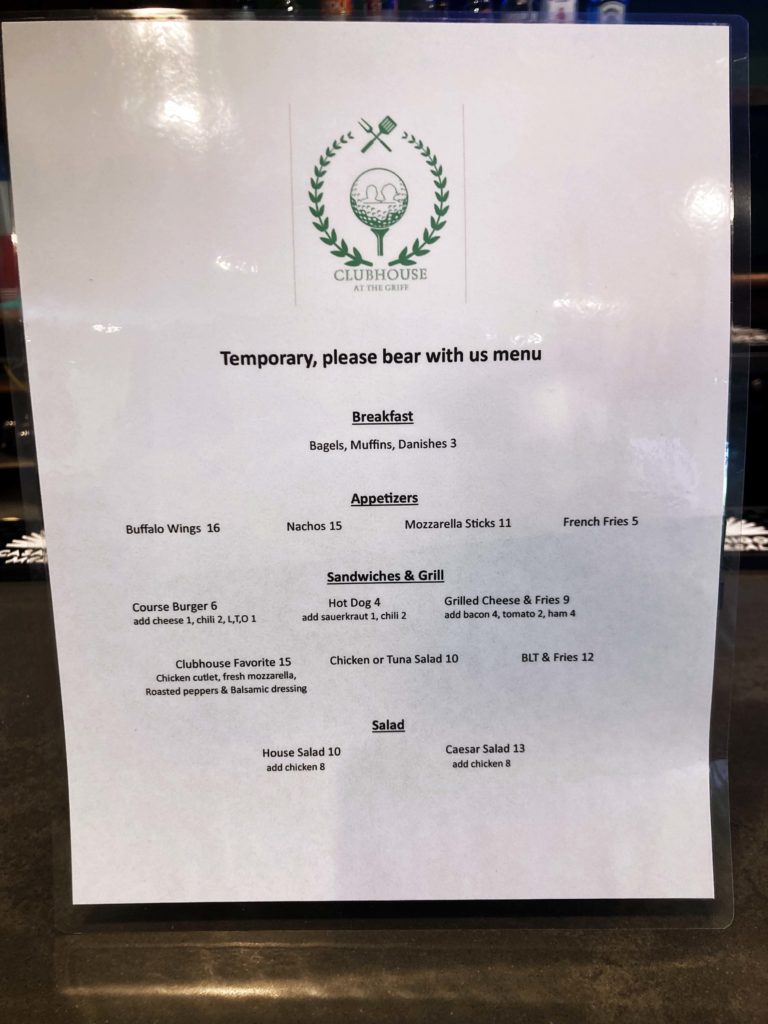By Paul Barbian

At the Retired Men’s Association Meeting on October 5th, Captain Rick McGoey, USN Retired, spoke on the subject “Control of the Seas during the Soviet-US Arms Race: How One Submarine Made a Difference.” This very informative presentation described life onboard a submarine, preparations for extended deployments, experiences during submarine operations, and how submarine operations influenced global events during the Soviet-US Arms Race.
Captain McGoey first described a modern nuclear submarine as being the length of a football field, sleeping quarters with three or more sailors in a state room, and up to nine in a bunk room, food stored under the floor of passageways, and a long “commute” from his state room near the bow to his duty station nearly to the stern. He also described his rigorous training including finding his way in the dark in a fire drill, and escape training drills in a 150-foot-tall water tank using an emergency breathing device. US modern subs stay on patrol and mostly underwater for up to 120 days. The length of a patrol is limited primarily by how much food can be stored on a submarine.
During the Cold War, the Soviets were building four naval vessels for each US vessel built. The US relied upon its superior technology to make up for the difference in numbers. Therefore, it was very important for the US to know about any technology advances being made by the Soviets. As part of the ongoing US efforts to collect intelligence about Soviet technology, Captain McGoey aboard the US nuclear submarine Silverside was deployed to the Barents Sea off of the northern coast of Russia to monitor deployments of advanced Soviet subs. After waiting patiently, the Silverside observed the Soviets testing a new sub. The Silverside was able to follow the Soviet sub so closely that the US sailors could hear the Soviet sailors speaking on the new sub. The Silverside also observed four failed Soviet attempts to sink a wooden replica of the US carrier, Enterprise, using a new type of cruise missile. The Silverside collected invaluable intelligence on this mission, and was not detected by the Soviets, in spite of being extremely close to the Soviet sub and beneath multiple Soviet surface vessels.
Captain McGoey served for 30 years in the US Navy in both active and reserve duty and held various command positions on both US Fleet ballistic missile and US fast attack nuclear powered submarines. Captain McGoey attended the US Naval Academy and then completed nuclear power training and certification under Admiral Rickover. He served onboard the USS James Madison and the USS Silversides. Following active duty, he served in the Naval Reserve including Submarine Command and Control in the Pentagon. He received many naval commendations. In his civilian life he worked in the US electric power industry with a specialty in nuclear engineering. He held various executive positions in an electric utility and a consulting company supporting nuclear power plant engineering and operations, and was involved in new nuclear developments and state-of-the-art advanced small modular reactors. He continues to serve as a Blue and Gold Officer supporting the Admissions Office of the US Naval Academy, Annapolis, Maryland.
The RMA’s next presentation will be by Dr. Alison Kibler who will be focusing on how hate speech is making headlines again. Major professional sports teams are abandoning their racist mascots and adopting new names. Colleges and universities grapple with how to respond to racial epithets and anti-Semitic graffiti. Social media platforms remove political groups for violating their hate speech policies. These incidents have generated sharp debates about the value of free speech. Is free speech a rallying cry for white supremacists? Or is free speech a vehicle for progressive activism? History clearly shows that struggles over hate speech are nothing new. Hate speech has been a century-long rift in American politics because it pits two deeply held American values against each other: free speech and equality. In this presentation, and in her book Censoring Racial Ridicule, Kibler explores the relationship between free expression, democracy, and equality in America. She shows how, historically, the Irish, Jewish, and African American campaigns against racial ridicule in the early 20th century are at the roots of contemporary debates over hate speech.
M. Alison Kibler earned her BA from Brandeis University and her PhD from the University of Iowa. A professor in American Studies and Women’s, Gender, and Sexuality Studies at Franklin and Marshall College in Lancaster, Pennsylvania, she is the author of Rank Ladies: Gender and Cultural Hierarchy in American Vaudeville, 1890-1930 and Censoring Racial Ridicule: Irish, Jewish, and African American Struggles Over Race and Representation, 1890-1930. She is currently writing a book about feminist television activism in the 1970s.
This presentation will occur on Wednesday, October 19, at 11:00 a.m. at the First Presbyterian Church in Greenwich as well as on webinar at: https://bit.ly/30lBj21. All those who attend this presentation at the Church must be vaccinated against Covid and have had a booster shot.
RMA speaker presentations are presented as a community service at no cost to in-person or Zoom attendees. The RMA does request that all eligible individuals consider becoming a member of our great organization, and thereby enjoy all the available fellowship, volunteer and community service opportunities that the RMA offers to its members. For further information, visit www.greenwichrma.org or contact Joe Mancinelli (mailto:jlmanc@optonline.net) or Peter Stern (mailto:members@greenwichrma.org).




